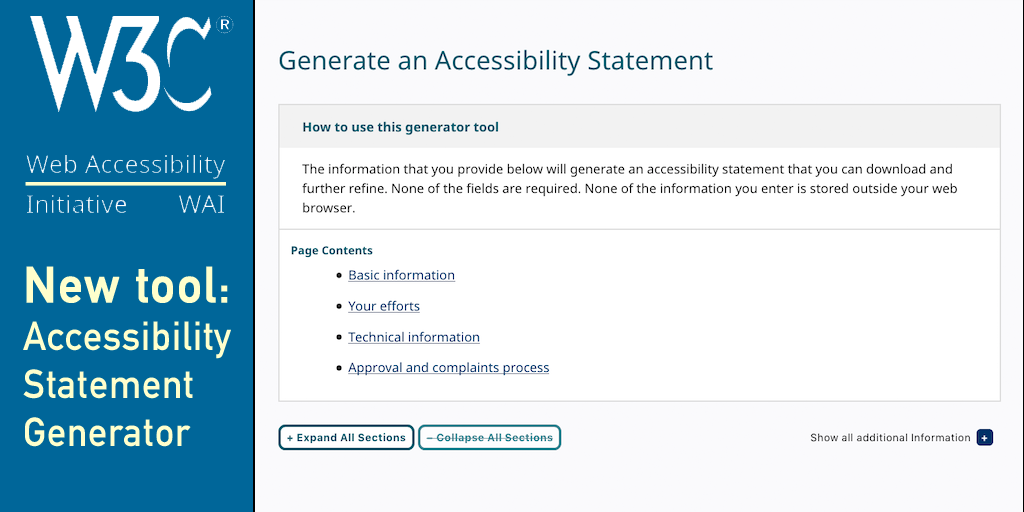 The WAI Education and Outreach Working Group (EOWG) has published Developing an Accessibility Statement.
The WAI Education and Outreach Working Group (EOWG) has published Developing an Accessibility Statement.
The resource helps you create an accessibility statement for your website, mobile app, or other digital content. It includes guidance, examples, and a free generator tool. The tool helps you collect and enter relevant information to create an accessibility statement for your particular content and situation. See more information in How to Create Accessibility Statements blog post.
Learn more about the Web Accessibility Initiative (WAI).
